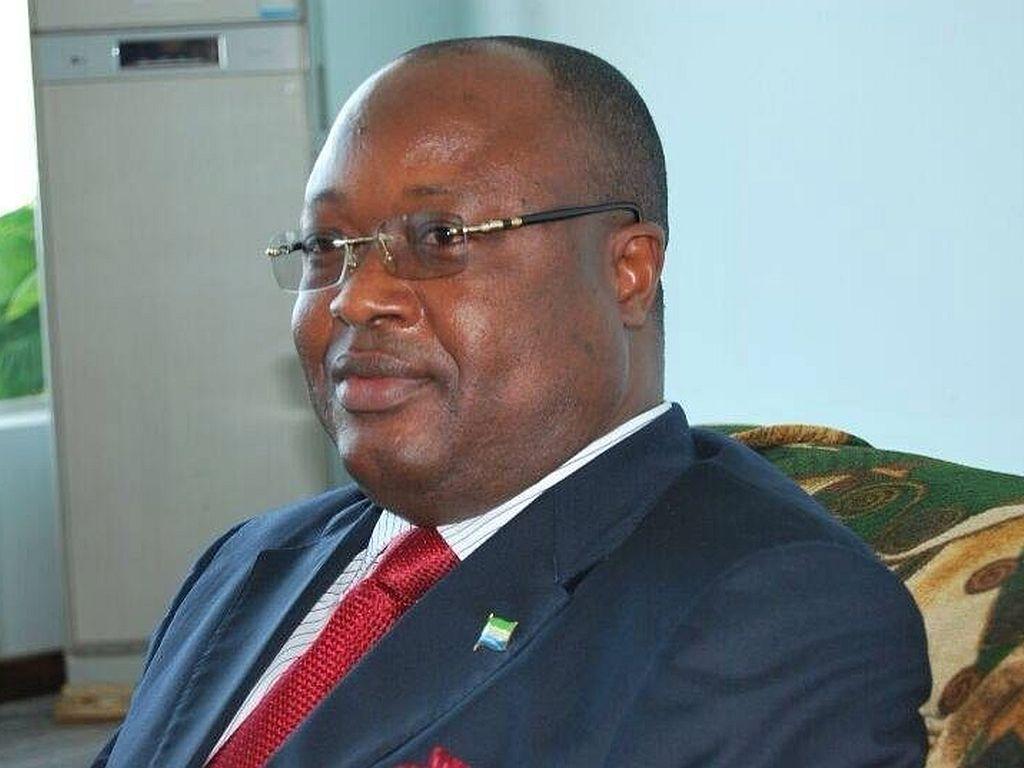The authorities agreed with the staff assessment that monetary policy remains sufficiently tight to achieve the programmed inflation target. In this context, continued adherence to the new regulation on Bank of Sierra Leone (BSL) direct financing to the Government will beessential. Steadfast adherence to these regulations would provide opportunities for betterliquidity forecasting and for enhancing the effectiveness of secondary market operations.
The monetary policy rate will be increasingly used to signal the BSL’s monetary policy stance and to proactively contain inflation expectations.
The BSL remains committed to building international reserves as programmed, but will maintain a careful balance between reserve accumulation and liquidity management. The expected increase in US dollar-denominated government revenue andfinancing flows in 2012 will support this objective, but will also generate challenges forliquidity management. The mission stressed the importance of relying on market-basedpolicies in managing liquidity.
While maintaining a floating exchange rate regime, BSL’s interventions in the exchange market will be limited to smoothing exchange rate volatility.
To clearly distinguish between intervention and liquidity management functions of its foreignexchange operations, the BSL will only speed up foreign exchange sales when expectedbulky inflows are realized and spent by the government. Close monitoring of marketconditions, as well as coordination with the Treasury will be important to ensure that anyneeded sterilization measures are taken timely; and to contain volatility in the foreignexchange market.
External Debt Policy and Debt Management
Debt Sustainability Analysis results show that the risk of debt distress remains moderate. Under the baseline scenario, all external debt indicators are below
their policy-dependent indicative thresholds throughout the projection period (2012–32). The analysis indicates that the medium to long-term debt outlook is vulnerable to fiscal, growth and exports shocks, as well as unfavorable borrowing conditions—pointing to the need to sustain fiscal consolidation efforts, remove impediments to growth, enhance export diversification, and maintain prudent borrowing policies.
Debt management capacity needs to improve.
Staff expressed concerns over the poor reporting on the contracting of nonconcessional external debt, and urged the authorities to enhance external debt management capacity. The authorities have requested technical assistance from the IMF and World Bank staff for the preparation of a Medium-Term Debt Management Strategy. In addition, they have taken measures to improved data monitoring and recording, as well as communication with Fund staff. For 2012, the authorities have introduced the following measures: (i) the re-assessment of the grant element of any loan prior to signing, in consultation with Fund staff; (ii) steadfast adherence to the procedures for recording all stages of external loan contracting; (iii) preparation of a quarterly report on the stock of debt outstanding, and loan agreements under discussion; and (iv) improved coordination and information sharing between all government agencies involved with external debt contracting.
Structural Reforms
The authorities plan to accelerate implementation of structural reforms. With technical assistance from development partners, structural reforms will focus on the following measures:
· Revision of prudential guidelines on banking supervision to ensure consistency with the amended banking Act, and enhance compliance with the Basel
Core Principles.
· Reform of the payment and settlement system, with support from the AfDB
· Preparation and implementation of an action plan to promote financial sector development.
PROGRAM MONITORING AND CAPACITY TO REPAY THE FUND
Program monitoring. The program will be monitored based on quantitative performance criteria for end-June and end-December 2012, as well as structural
benchmarks for 2012 (MEFP, Tables 3 and 4). To better assess fiscal performance, staff agreed with the authorities to introduce a domestic primary deficit target in the program. Prior actions for the fourth review aimed at enhancing public financial management and improving coordination between fiscal and monetary policies. They were implemented at end-June (see above).
The burden of debt service to the Fund is manageable. It is projected to average 0.4 percent of exports of goods and services (Table 6) for the remainder of the
program period. The government is making good faith efforts to resolve arrears to commercial creditors, accumulated before and during the civil war, and has been making goodwill payments to avoid litigation. It is anticipated that a debt-buy-back operation will be initiated in the period ahead with support from the World Bank. Sierra Leone’s record on meeting financial obligations, the country’s economic outlook, as well as ongoing efforts to resolve arrears to commercial creditors, provides sufficient financing assurances on capacity to repay the Fund.
STAFF APPRAISAL
Sierra Leone’s economic growth has strengthened in recent years and medium term prospects continue to be favorable. Agriculture, construction, and services, as well as the scaling up of infrastructure investment, have been the main growth drivers, paving theway for higher output expansion in the non-mineral economy over the medium-term. Theadvent of iron ore production in late 2011 will significantly boost growth and exports in2012 and beyond. Progress in structural reforms will be essential to buttress this positiveoutlook.
There are, however, important downside risks. The uncertain global economic outlook and the risk of adverse price movements for key commodities for Sierra Leone, notably iron ore and oil, could increase budget and external current account deficits and dampen growth prospects. Hence, staff urges the authorities to remain vigilant in policy implementation and take adjustment measures should these risks materialize to ensure that fiscal and monetary policies continue to support macroeconomic stability.
Staff welcomes the authorities’ efforts to contain spending in the first half of 2012. Measures to improve expenditure execution monitoring in the first half of the year augurs well for the achievement of 2012 fiscal targets. Use of the CMC and of the monthly treasury cash flow statements was instrumental in the achievement of end-June fiscal targets and should continue for the remainder of the year.
Staff encourages the authorities to strengthen fiscal consolidation efforts. Revenue-enhancing measures to increase administrative efficiency, as well as tax reform in extractive industries, will be necessary to reduce reliance on exceptional revenue, broaden the tax base and create fiscal space for priority capital and social spending. Adoption and implementation of the planned tax and expenditure reforms will be critical.
Continued tight monetary policy stance is needed to lower inflation expectations. The trend decline in inflation since mid-2011 is encouraging. Absent
a new exogenous price shock, and provided that the monetary policy stance remains tight, theauthorities’ inflation target for 2012 is reachable. In this context, staff encourages theauthorities to continue adhering to the 2011 regulations limiting BSL direct financing to thegovernment budget, and welcomes the BSL’s commitment to use its money market instruments proactively to manage liquidity.
The debt sustainability analysis shows that the risk of debt distress is moderate.
All debt indicators remain below the policy-dependent thresholds in the long term. However, the debt outlook is vulnerable to shocks, notably unfavorable borrowing conditions. Staff encourages the authorities to maintain prudent borrowing policies, and to implement capacity-enhancing measures planned for 2012 to ensure that all external loan contracted are on concessional terms. The above, on page 13 - 16, is an excerpt from the Fourth Review Under the Three-Year Arrangement Under the Extended Credit Facility, and Financing Assurances Review. Prepared by the African Department (In consultation with other departments) and approved by Seán Nolan and Dhaneshwar Ghura, September 5, 2012
© Politico 20/11/12








